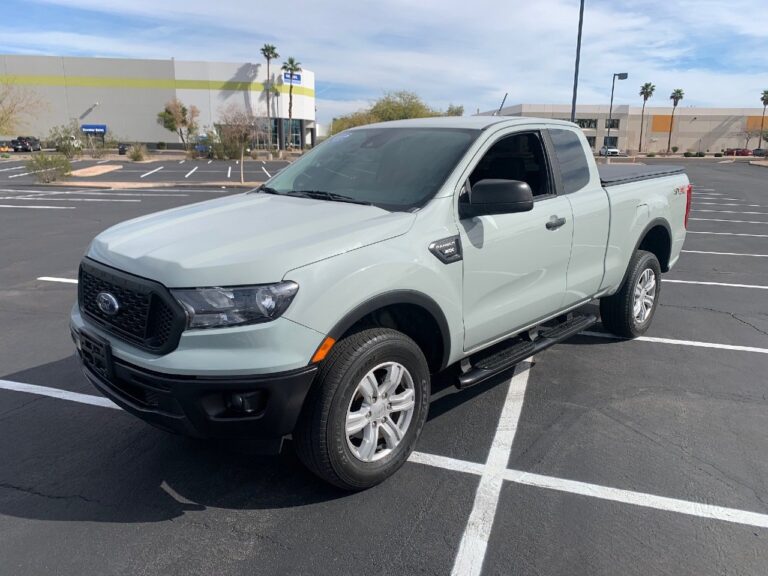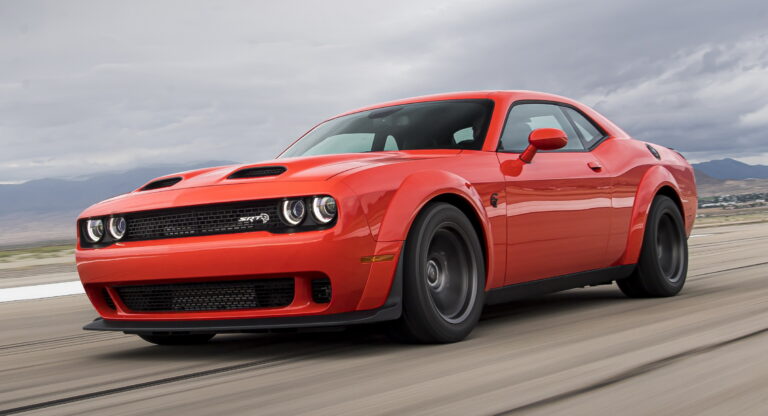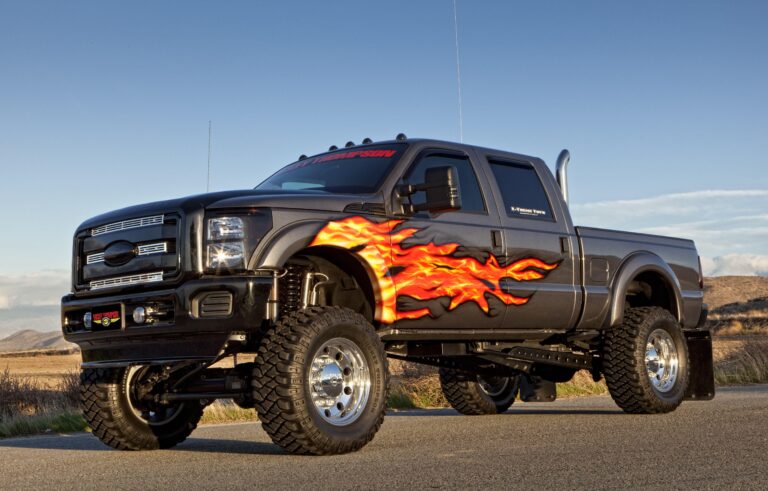What Are The Dimensions Of A Truck Cap That Fits A 5’7" Truck Bed?
What Are The Dimensions Of A Truck Cap That Fits A 5’7" Truck Bed? cars.truckstrend.com
For truck owners, the bed of their vehicle is a canvas of utility, ready to haul tools, camping gear, or weekend adventure supplies. A truck cap, often called a topper or camper shell, transforms this open bed into a secure, weather-protected, and often more versatile enclosed space. However, choosing the right truck cap is far from a one-size-fits-all endeavor, especially when dealing with specific bed lengths like the popular 5’7" (or 5.5-foot) configuration.
Understanding "What Are The Dimensions Of A Truck Cap That Fits A 5’7" Truck Bed?" is not just about knowing a single number. It’s about navigating a complex interplay of length, width, height, and truck-specific contours that ensure a perfect, watertight, and aesthetically pleasing fit. A cap that’s even slightly off can lead to leaks, an unsightly appearance, or even damage to your truck. This comprehensive guide will meticulously break down the critical dimensions, considerations, and practical advice necessary to select the ideal truck cap for your 5’7" truck bed, transforming your pickup into an even more capable companion.
What Are The Dimensions Of A Truck Cap That Fits A 5’7" Truck Bed?
Understanding Your 5’7" Truck Bed: More Than Just Length
While your truck’s specifications might proudly state a "5’7" (or 5.5 ft) bed," this nominal length is merely a starting point. Truck manufacturers often round bed lengths for marketing purposes, and the actual usable dimensions can vary significantly between makes, models, and even model years. For instance, a Ford F-150’s 5.5-foot bed is dimensionally distinct from a Ram 1500’s 5’7" bed, or a Toyota Tundra’s 5.5-foot bed. These subtle differences are crucial because truck caps are custom-molded to fit the precise contours and dimensions of specific truck models.
To accurately determine the dimensions for a truck cap, you need to precisely measure your truck bed:
- Inside Length (Bulkhead to Tailgate): Measure from the inside of the bulkhead (the wall closest to the cab) to the inside of the closed tailgate. This is your primary length measurement. For a nominal 5’7" bed, this will typically be around 66 to 67 inches (approximately 167.6 to 170.2 cm).
- Inside Width (Between Wheel Wells): Measure the narrowest point of your bed, which is usually between the wheel wells. While not directly for the cap’s exterior fit, this gives you an idea of the usable interior space.
- Outside Width (Rail to Rail – Front): Measure the width of your truck bed from the outside edge of one bed rail to the outside edge of the other, near the bulkhead (closest to the cab).
- Outside Width (Rail to Rail – Rear): Repeat the outside width measurement near the tailgate. Many truck beds taper slightly, meaning the rear width might be a fraction different from the front. A good truck cap will account for this taper.
- Bed Rail Height/Depth: Measure from the bed floor (or top of your bed liner, if present) to the very top of the bed rail. This isn’t a direct cap dimension but helps understand how much the cap will sit above the bed rails.

Why are these measurements so critical? A truck cap doesn’t just sit in the bed; it sits over the bed rails, creating a sealed enclosure. The cap’s frame needs to perfectly align with these rails, accounting for any curvature, angles, or accessory mounting points.
Key Dimensions of a Truck Cap: What to Measure and Why
When looking at truck caps, their dimensions are designed to integrate seamlessly with your truck’s bed measurements. Here’s a breakdown of the cap’s critical dimensions:

-
Cap Length: For a 5’7" truck bed, the cap’s internal frame length will be designed to fit the 66-67 inch bed length. The cap will typically be slightly shorter than the bed’s full length to allow for tailgate clearance and proper sealing mechanisms. The exterior length, including any overhangs, will be engineered to match the bed’s length precisely, usually ending flush with the tailgate.

Cap Width: This is arguably the most variable and critical dimension. A cap for a 5’7" bed will have a width designed to sit snugly over your specific truck’s bed rails.
- Front Width: The cap’s width at the bulkhead end must match your truck’s front rail-to-rail measurement.
- Rear Width: Similarly, the cap’s width at the tailgate end must match your truck’s rear rail-to-rail measurement.
- Typical Width Range: For full-size trucks with a 5’7" bed, the outside width of the cap will generally range from 70 to 76 inches (approx. 178 to 193 cm). Mid-size trucks, if they have a bed that rounds up to 5’7", would have narrower caps. This range accounts for the various full-size truck models (F-150, Ram 1500, Silverado/Sierra, Tundra) that utilize this approximate bed length.
-
Cap Height: This dimension determines the amount of vertical cargo space and the overall aesthetic.
- Cab-High: These caps are designed to sit flush with the top of your truck’s cab. This offers the most aerodynamic and factory-integrated look. The exterior height from the bed rail to the top of the cap would typically be around 20-24 inches (approx. 51-61 cm).
- Mid-Rise/Sport: Slightly taller than the cab, these caps provide additional cargo volume without being overly bulky. They often feature a gentle rise. Exterior height typically ranges from 24-30 inches (approx. 61-76 cm) from the bed rail.
- High-Rise/Commercial: These caps are significantly taller, maximizing cargo space and often designed for commercial use with barn doors or oversized rear openings. Exterior height can be 30-36 inches (approx. 76-91 cm) or more from the bed rail.
- Interior Clearance: This is the usable height inside the cap, from the bed floor to the cap’s ceiling. This will be the cap’s height minus the bed rail height and the thickness of the cap’s roof.
-
Weight: While not a dimension, the cap’s weight is a crucial specification.
- Fiberglass caps for a 5’7" bed typically weigh between 150-250 lbs (approx. 68-113 kg).
- Aluminum caps are lighter, ranging from 100-200 lbs (approx. 45-91 kg).
- Commercial-grade aluminum caps with heavy-duty construction and features can weigh more.
The cap’s weight impacts your truck’s payload capacity and potentially fuel economy.
Navigating Manufacturer Specifics for a 5’7" Bed
It cannot be stressed enough: a 5’7" bed is not a universal fit. Truck cap manufacturers produce specific models for each truck’s year, make, and precise bed dimensions.
Common trucks that offer a bed length rounded to 5’7" (or 5.5 feet) include:
- Ford F-150 (5.5 ft bed): This is one of the most common full-size short beds.
- Ram 1500 (5’7" bed): Ram’s equivalent short bed.
- Chevrolet Silverado 1500 / GMC Sierra 1500 (often 5’8" short box, but some configurations might be closer to 5’7" nominal): Always double-check exact measurements.
- Toyota Tundra (5.5 ft bed): Toyota’s full-size short bed.
- Nissan Titan (5.5 ft bed): Nissan’s full-size short bed.
Actionable Insight: Do not guess. Look up the exact specifications for your truck’s year, make, model, and trim level. Then, consult the truck cap manufacturer’s fitment guide (e.g., ARE, Leer, SnugTop, etc.). These guides will explicitly state which cap model fits your specific truck, ensuring all dimensions and contours are accounted for.
Choosing the Right Truck Cap Type for Your 5’7" Bed
Beyond dimensions, the type of cap significantly impacts functionality and aesthetics:
-
Fiberglass Caps:
- Pros: Most popular, aesthetically pleasing, molded to match truck body lines, can be painted to match factory color, good insulation, durable.
- Cons: Heavier than aluminum, typically more expensive, can be prone to cracking if severely impacted.
- Best For: Recreational users, those prioritizing aesthetics, campers, general cargo protection.
-
Aluminum Caps:
- Pros: Lighter weight, highly durable, often more cost-effective, ideal for heavy-duty use, can be customized with various toolboxes and racks.
- Cons: More utilitarian appearance, less refined aesthetics compared to fiberglass, can be louder due to less insulation.
- Best For: Commercial use, contractors, off-road enthusiasts needing maximum durability and minimal weight.
-
Commercial Caps (often aluminum, sometimes fiberglass):
- Pros: Built for extreme durability, often feature reinforced construction, side access doors, internal shelving/racks, heavy-duty latches.
- Cons: Heaviest, most expensive, purely utilitarian appearance.
- Best For: Tradespeople, mobile service providers, anyone requiring robust storage and easy access to tools.
Installation and Practical Considerations
Once you’ve identified the perfect cap based on dimensions and type, installation and ongoing use present further considerations:
- Installation: While some DIY enthusiasts install caps, professional installation is highly recommended. Dealers have the right tools, experience, and knowledge to ensure a watertight seal, proper clamping, and correct electrical wiring (for interior lights, third brake light). An improper seal can lead to water intrusion, damaging cargo and the truck bed.
- Sealing: The interface between the cap and the bed rails is critical. High-quality weather stripping and sealants are used to prevent water and dust from entering.
- Clamping: Caps are secured to the bed rails with clamps that typically don’t require drilling. Ensure these clamps are tightened correctly and checked periodically.
- Fuel Economy: Adding a cap can slightly improve aerodynamics for some trucks by smoothing airflow over the bed, potentially leading to a minor increase in fuel efficiency. However, the added weight can counteract this benefit, especially with heavier caps or significant cargo.
- Rear Visibility: A cap will obscure your rear window. Ensure your truck has good side mirrors or consider adding a backup camera if not already equipped.
- Weight Distribution: The added weight of the cap is primarily over the rear axle, which can improve traction in some conditions but also slightly affect handling.
Tips for Measuring and Purchasing
- Measure Thrice, Buy Once: Use a steel tape measure for accuracy. Measure your bed’s length and both front/rear widths multiple times to confirm.
- Account for Bed Liners: If you have a drop-in bed liner, it can slightly alter the internal dimensions and the way the cap sits on the bed rails. Some caps are designed to accommodate liners, others may require trimming the liner or removal. Consult your cap dealer.
- Consult the Experts: Your local truck cap dealer or the manufacturer’s website is your best resource. They have detailed fitment guides and can confirm the exact dimensions for your specific truck and cap model.
- Consider Your Use Case: Think about what you’ll primarily use the cap for. This will guide your decision on height, material, and features (e.g., side access windows for tools, roof racks for gear, interior lighting for camping).
Challenges and Solutions
- Mis-measurement: The biggest challenge.
- Solution: Always verify measurements with a reputable dealer or the manufacturer’s fitment guide. If buying used, get exact dimensions from the seller and compare them to your truck’s documented specifications.
- Bed Liners Interfering:
- Solution: Inform your dealer about your bed liner. They can advise on compatibility or suggest minor modifications.
- Tailgate Clearance Issues:
- Solution: Modern caps are designed for proper tailgate clearance. Ensure the cap’s rear door or window clears your tailgate when opening and closing.
- Universal vs. Custom Fit: While some "universal" caps exist for certain applications, for a secure, watertight, and aesthetically pleasing fit on a 5’7" bed, a custom-fit cap designed for your specific truck model is paramount.
Price Table: Estimated Truck Cap Costs for a 5’7" Truck Bed
Prices for truck caps vary widely based on brand, material, features, and region. The table below provides a general estimate for new caps designed to fit a 5’7" truck bed, excluding installation costs which can range from $100-$300.
| Feature/Type | Description | Estimated Dimensions (Cap Body, L x W x H) | Estimated Price Range (USD) | Key Considerations |
|---|---|---|---|---|
| Fiberglass Cap | Smooth, custom-molded, painted to match truck. | ~66-67" L x 70-76" W x Varies H | $1,800 – $3,500+ | Best aesthetics, good insulation & security. |
| Cab-High | Matches truck cab height. | ~66-67" L x 70-76" W x 20-24" H | $1,800 – $2,800 | Seamless look, less wind resistance. |
| Mid-Rise | Slightly taller than cab, more cargo room. | ~66-67" L x 70-76" W x 24-30" H | $2,200 – $3,200 | Balance of cargo and aesthetics. |
| High-Rise | Significantly taller, maximum cargo volume. | ~66-67" L x 70-76" W x 30-36" H | $2,500 – $3,500+ | Max utility, may look less integrated. |
| Aluminum Cap | Lightweight, durable, utilitarian, often for work. | ~66-67" L x 70-76" W x Varies H | $1,200 – $2,500+ | Lighter, cost-effective, durable for work. |
| Basic Shell | Simple, no frills, unpainted. | ~66-67" L x 70-76" W x 20-24" H | $1,200 – $1,800 | Functional, lowest cost. |
| Commercial Grade | Heavy-duty, often with side access doors, internal racks. | ~66-67" L x 70-76" W x 24-36" H | $2,000 – $4,000+ | Maximum utility, highly customizable for work. |
| Optional Features | N/A (adds to base price) | |||
| Roof Rack | For carrying additional gear (kayaks, bikes, ladders). | N/A | $200 – $800+ | Adds versatility for outdoor enthusiasts or workers. |
| Headliner/Carpet | Improves insulation, reduces condensation, cleaner look. | N/A | $150 – $300 | Comfort, noise reduction. |
| Interior LED Lighting | Essential for visibility inside the cap. | N/A | $50 – $150 | Practicality for night use. |
| Sliding/Vented Windows | Airflow, access, pet ventilation. | N/A | $100 – $400 per window | Air circulation, convenience. |
| Remote Lock | Integrates with truck’s central locking. | N/A | $150 – $300 | Convenience and security. |
| Pet Screens | For pet safety and ventilation. | N/A | $50 – $150 | Protects pets, allows airflow. |
Note: The "Estimated Dimensions (Cap Body)" refer to the typical exterior dimensions of the cap itself, designed to fit over a truck bed nominally 5’7" long. The exact width will vary based on the specific truck model’s bed rail width and taper.
Frequently Asked Questions (FAQ)
Q1: Can I use a cap from a different truck model if the bed length is similar (e.g., a Ford F-150 cap on a Ram 1500, both with 5’7" beds)?
A1: Highly unlikely to fit properly. Even if the nominal length is the same, the critical dimensions of width, bed rail curvature, and tailgate contour vary significantly between manufacturers. Truck caps are custom-molded for specific truck models to ensure a watertight and secure fit.
Q2: What if my truck bed has a drop-in bed liner? Will it affect the cap’s fit?
A2: Yes, a drop-in bed liner can slightly alter the dimensions of your bed rails and how the cap seats. Some cap manufacturers design their products to accommodate liners, while others may require the liner to be trimmed or removed. Always inform your truck cap dealer if you have a liner installed.
Q3: How do I measure my truck bed accurately for a cap?
A3: Use a sturdy steel tape measure. Measure the inside length from the bulkhead to the closed tailgate. Measure the outside width of the bed rails at both the front (near the cab) and the rear (near the tailgate), as beds often taper.
Q4: Are truck cap dimensions universal for a 5’7" bed across all manufacturers?
A4: No, absolutely not. The "5’7" bed" is a nominal length. The exact length, and more importantly, the width and contour of the bed rails, are unique to each truck’s year, make, and model. You must find a cap specifically designed for your truck.
Q5: How much does a truck cap typically weigh for a 5’7" bed?
A5: A fiberglass cap for a 5’7" bed usually weighs between 150-250 lbs. Aluminum caps are lighter, generally 100-200 lbs. The weight varies based on material, size, and added features.
Q6: Does adding a truck cap affect fuel economy?
A6: The impact on fuel economy is often minimal and can even be slightly positive for some trucks by improving aerodynamics (reducing drag from an open bed). However, the added weight of the cap and any cargo inside will counteract this benefit.
Q7: Can I install a truck cap myself, or do I need professional installation?
A7: While it’s possible for a DIY enthusiast, professional installation is highly recommended. Dealers have specialized tools, lifting equipment, and expertise to ensure a perfect, watertight seal, proper clamping, and correct electrical wiring for lights and locks. Improper installation can lead to leaks, security issues, or damage.
Conclusion
Choosing the correct truck cap for a 5’7" truck bed is a precise task that goes far beyond a single length measurement. It demands careful consideration of your truck’s exact dimensions, understanding the different types of caps and their respective dimensions (length, variable width, and height options), and recognizing the critical role of manufacturer-specific fitment. By diligently measuring your bed, consulting expert fitment guides, and weighing your practical needs against the available options, you can confidently select a truck cap that not only fits perfectly but also enhances the utility, security, and aesthetics of your pickup truck for years to come. Invest the time in research, and you’ll be rewarded with a seamless and highly functional addition to your vehicle.





